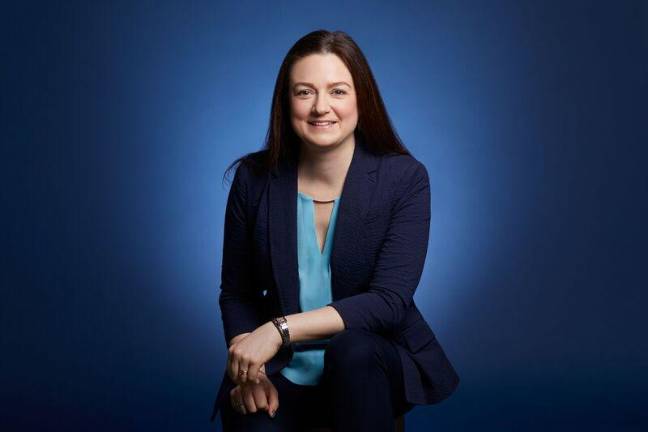‘Hospital At Home’ Care: A Win-Win for Both Hospitals and Patients
The COVID emergency brought treatment to patients at home. Will Medicare and insurance continue to cover such care?

Imagine going to your local Emergency Department (ED) because you have a bad skin infection that has not improved with antibiotics, and the ED doctor agrees that you need urgent care. But instead of immediately being admitted to the hospital and having to stay for an indeterminate number of nights in an unfamiliar room, you have the option of going home and essentially receiving the exact same care, while also being able to sleep in your own familiar bed and surroundings. At Mount Sinai and an increasing number of hospitals across the country, this is a very real option, and it is known officially as Hospital at Home (HAH).
Candidates for HAH are typically screened by a doctor and nurse, based on answers to questions about your home and the specifics of your condition and the treatment required. If approved, the patient is transferred home via ambulance, and a nurse will visit the patient within a few hours to begin treatment.
IV antibiotics, IV fluids, oxygen and other medications are all ordered and delivered to the home. A nurse will then return twice daily to provide continuing support, and a physician will visit daily (either in person or via video) to monitor the patient’s condition and oversee the treatment. Social workers and physical therapists are also available, just as they are in the traditional hospital setting. The medical treatment is virtually indistinguishable, but the experience of the patient in the comfort of their own home is vastly improved. No need to share a room!
Improving Patient Outcomes and Reducing Costs
Hospital at Home is not a new idea; it has been available internationally for years, and first appeared in the US in the mid-1990s. In 2014, the Mount Sinai Health System launched their own HAH program with a grant from the Center from Medicare and Medicaid Innovation. It has been shown to actually provide better outcomes, when measured by factors such as the rate of re-admissions to the hospital, patient satisfaction, and cost.
Most of the patients are older adults but the program is open those over age 18. Mount Sinai has been working with insurance companies to increase coverage for HAH, but not all insurance companies were willing to support an unfamiliar patient care model, despite the evidence in its favor. Most significantly, Medicare was also resistant to reimbursing hospitals for these programs. Given the large percentage of health care costs that involve Medicare coverage, this was an enormous obstacle to wider adoption. The COVID-19 pandemic changed everything.
The COVID pandemic represented an unprecedented challenge to health care and hospital systems like Mount Sinai, overwhelming its resources. Patients requiring emergent and continuing hospital care had to be treated by any means necessary, and without regard to cost. To help meet this need and increase capacity, Mount Sinai erected tents across Fifth Avenue in Central Park and arranged beds in the lobby of the hospital.
Another obvious way to increase capacity was to leverage the HAH program, not only directing some ED patients directly home for treatment if possible, but also transferring patients from the hospital to home to continue treatment once their condition was sufficiently stable. This option was an important part of Mount Sinai’s pandemic strategy, and further demonstrated just how effective this treatment program could be, even during a national emergency.
The Need for Advocacy Post-Pandemic
In November 2020, recognizing the success of Hospital at Home programs in fighting the pandemic, Medicare agreed to reimburse HAH at the same rate as other inpatient stays for hospitals that applied for and received approval. Fortunately the Mount Sinai health system was part of the first round of approvals, reflecting its leadership in this space. Unfortunately, this coverage for HAH treatment is only effective for the duration of the public health emergency, which will eventually end. Until Medicare permanently approves coverage, there is the risk that this momentum will be lost, and many patients will lose the option to receive their treatments at home. This will be a great loss for both patients who deserve more choice, and for the entire health care system, which would ultimately see reduced costs.
Fortunately, Medicare and our representatives in Washington DC understand the potential, and are asking the right questions. I recently testified in front of the U.S. Senate Finance Committee, responding to questions about our HAH program, and advocating for expanded and continued coverage. While we in the health care system continue to push for permanent support, you can all play a role in raising awareness about these important programs, helping us to expand coverage and make this option more widely available across the US. Contact your local representatives to express your support, and also demand that your insurance companies cover these programs. In the end, this is a win-win for both patients and hospitals, and will also help us better survive the next global pandemic when it inevitably hits.
Linda V. DeCherrie, MD is Professor of Geriatrics and Palliative Medicine at the Mount Sinai Health System. She is also the Clinical Director of Mount Sinai Hospitalization at Home.
Candidates for HAH are typically screened by a doctor and nurse, based on answers to questions about your home and the specifics of your condition and the treatment required.